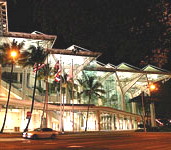Identifying Autism from Neural Representations of Social Interactions: Neurocognitive Markers of Autism
Abstract: Autism is a psychiatric/neurological condition in which alterations in social interaction (among other symptoms) are diagnosed by behavioral psychiatric methods. The main goal of this study was to determine how the neural representations and meanings of social concepts (such as to insult) are altered in autism. A second goal was to determine whether these alterations can serve as neurocognitive markers of autism.
The approach is based on previous advances in fMRI analysis methods that permit (a) the identification of a concept, such as the thought of a physical object, from its fMRI pattern, and (b) the ability to assess the semantic content of a concept from its fMRI pattern. These factor analysis and machine learning methods were applied to the fMRI activation patterns of 17 adults with high-functioning autism and matched controls, scanned while thinking about 16 social interactions.
One prominent neural representation factor that emerged (manifested mainly in posterior midline regions) was related to self-representation, but this factor was present only for the control participants, and was near-absent in the autism group. Moreover, machine learning algorithms classified individuals as autistic or control with 97% accuracy from their fMRI neurocognitive markers.
The findings suggest that psychiatric alterations of thought can begin to be biologically understood by assessing the form and content of the altered thought's underlying brain activation patterns.
Paper by: Marcel Adam Just mail, Vladimir L. Cherkassky, Augusto Buchweitz, Timothy A. Keller, Tom M. Mitchell
Visit: http://www.plosone.org/article/info%3Adoi%2F10.1371%2Fjournal.pone.0113879


 Abstract: Breast cancer occurring in women under the age of 40 is uncommon in the absence of family history or genetic predisposition, and prompts the exploration of other possible exposures or environmental risks.
Abstract: Breast cancer occurring in women under the age of 40 is uncommon in the absence of family history or genetic predisposition, and prompts the exploration of other possible exposures or environmental risks. The 2015 conference theme is
The 2015 conference theme is 